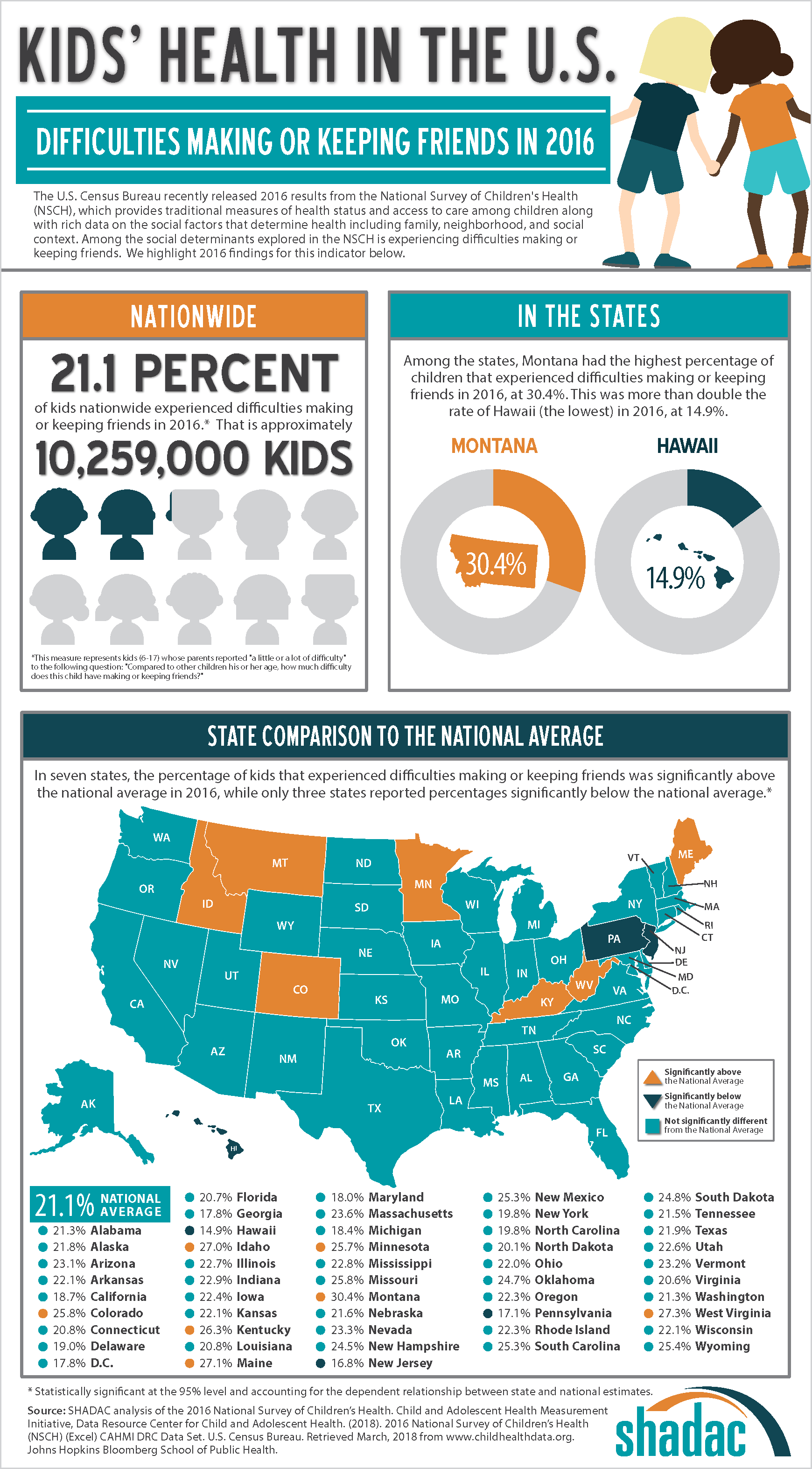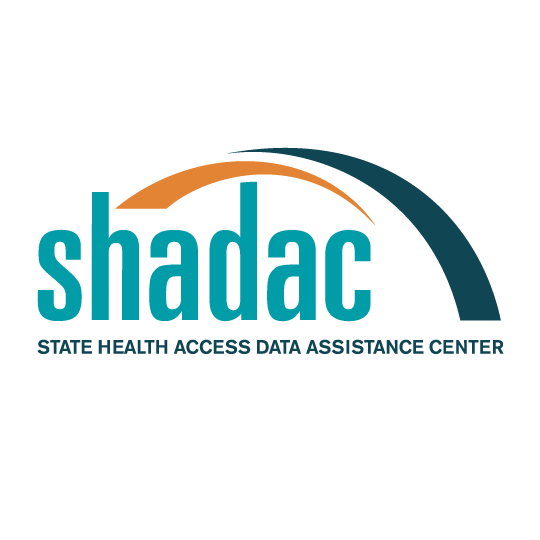Blog & News
Kids' Health Data Highlight: Difficulties Making or Keeping Friends in 2016 (Infographic)
August 16, 2018:It is increasingly clear that health is determined not just by biological and clinical factors but to a greater extent by socio-demographic factors. With this in mind, we need data for monitoring the social determinants of health just as we do for monitoring biological and clinical determinants. The U.S. Census Bureau recently released estimates from the 2016 National Survey of Children’s Health (NSCH), providing a data source that is ideal for precisely this purpose. The NSCH provides traditional measures of health status and access to care among children along with rich data on the social factors that determine health including family, neighborhood, school, and social context.
SHADAC is highlighting state-specific findings from the 2016 NCSH on measures that illustrate where states are closer to achieving a culture of health and where improvements can be made. As additional years of NCSH data are released, we will be able to monitor trends in these indicators to track progress in developing a culture of health over time.
 Difficulties Making or Keeping Friends
Difficulties Making or Keeping Friends
According to data from the NSCH, 21.1 percent of children nationwide (approximately 10,259,000 children) experienced difficulties making or keeping friends in 2016. This measure includes kids (ages 6-17) whose parents reported "a little or a lot of difficulty" to the following question: "Compared to other children his or her age, how much difficulty does this child have making or keeping friends?"
Among the states, the percentages of children that experienced difficulties making or keeping friends in 2016 were significantly above the national average of 21.1 percent in seven cases: Montana (30.4%), West Virginia (27.3%), Maine (27.1%), Idaho (27.0%), Kentucky (26.3%), Colorado (25.8%), and Minnesota (25.7%). Three states had percentages below the national average for this measure: Hawaii (14.9%), New Jersey (16.8%), and Pennsylvania (17.1%).[1]
Click on the infographic for additional state-level information about children living in neighborhoods with no amenities.
Additional Kids' Health Data Highlights
Kids' Health in the U.S.: Parental Attendance at Kids' Activities in 2016
Kids' Health in the U.S.: Living in Neighborhoods with No Amenities in 2016
Kids’ Health in the U.S.: Living in Supportive Neighborhoods in 2016
Kids’ Health in the U.S.: Living in Working Poor Households in 2016
Kids’ Health in the U.S.: Trouble Affording Nutritious Meals in 2016
More about the NSCH
The NSCH was administered three times prior to 2016 – in 2003, 2007, and 2011/12. However, the 2016 NSCH is different because it integrated the NSCH with the National Survey of Children with Special Health Care Needs (NS-CSHCN) and introduced a number of new survey items, establishing a new baseline. Going forward, the NSCH will be administered annually. The survey is administered online and via mail, and survey results are weighted to represent the population of non-institutionalized children ages 0-17 who live in housing units nationally and in each state.
The full 2016 NSCH public-use file (PUF) is available on the Census Bureau’s NSCH page.
[1] Statistically significant differences are calculated at the 95% level and account for the dependent relationship between state and national estimates.









